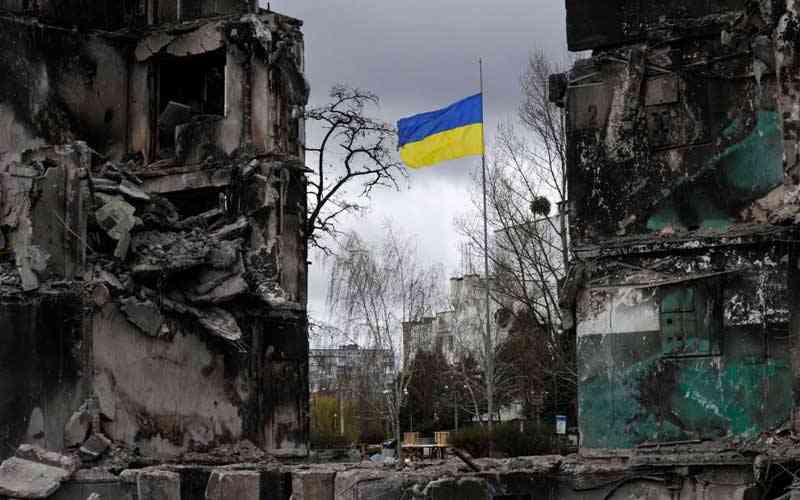
Inflation, recession and possibly a global recession — these are words haunting the best of us of late.
These fears have dominated the trade with equity markets and affected nearly all commodities. As consumers are faced with rising food and fuel prices many are cutting back on purchases, demand taking a back seat as fears of recession continues to impede consumer confidence to spend.
In the beginning of July crude oil price tumbled hard 10% down and broke the US$100/barrel mark. Industrial metals were also on a melt down with copper, aluminium, zinc all also had fair share of price drop from their recent record highs.
Additionally, a sharp rally in the U.S. dollar was also seen as negative for commodity futures. Euro at the lowest level against US$ since 2002, Yen sinks near 24 years low again.
Is there any good news, anything to look forward to? Doubtful, unless there’s an end to the war in Ukraine. An end to the war without a pull out of Russian troops or with Russia still controlling the supply chain may just make things worse.
But hold on, following lengthy negotiations mediated by Turkey and the UN, Russia has agreed to unblock Ukrainian ports to allow the export of grain. Since then, approximately 30 vessels have left the largest Ukrainian ports in the Black Sea.
Fundamentally, this is bearish news as it said there’s still a minimum of 20 million to 25 million metric tonnes of last season grains crop that is yet to be released to the world. This is on top of this season crop, with sunflower seed and wheat currently being harvested now with corn harvesting starting in September. If all goes well, this will also mean Russian fertilisers would also be able to find her way out of the Black Sea ports. This is positive news for next season plantings.
While the fear of fertiliser shortage has somewhat disappeared, at least for now, but the cost for next planting season certainly have risen by over 150%.
- Africa hit hard by high e-waste pollution
- Africa is paying dearly for the Russian/Ukraine conflict
- Power cuts: Zesa sleeping on duty
- Emcoz congress set for this week
Keep Reading
The US economy is slowing. US inflation rate was an average of 3% per annum for several years but accelerated to over 40 years high of 9,1% in June 2022, falling to 8,5% in July. US Fed raised interest rate for the 4th time so far this year, amounting to a total of 225 bps thus far. Some expect Federal Open Market Committee (FOMC) to raise rates by another 100-150 basis points during the remaining months of 2022.
Sluggish demand in China is pulling down Asia equities. China GDP is expected to post its lowest quarterly growth rate in more than 2 years. With mounting COVID-19 costs, soft consumer spending, slower manufacturing activities; economist are sceptical even a rebound in 2nd half of 2022 China may not be able to achieve her minimum 5,5% growth target. With China off-take predicted to fall further, global demand for feeds is not likely to increase.
Premier Li was quick to announce a US$75 billion infrastructure pending/stimulus plan to revive the flagging Chinese economy. However, it’s unlikely to reverse global metals meltdown. Unlike in the past where Chinese stimulus played major role in rescuing industrial commodities from the slumps in 2008, 2015 and arguable in 2020, there appears to be more caution this time.
These extra funds from special bonds sales will likely be used to plug COVID-19 era budget gaps and won’t tackle the bigger issue for metals demand as China real estate is still in the grip of a long downturn and the scale of infrastructure spending is uncertain along with export demand that global recession which may slow down factory output.
As China continues to see sporadic outbreaks of COVID-19 virus and pursues a zero COVID-19 policy, this year’s stimulus will be certainly weaker than the previous ones. Poor Chinese manufacturing index indicate that China economy continue to be challenging, prompting crude oil to crack below the $100/barrel range citing poor future economy growth.
All of this is a severe and exogenous shock to countries across the African continent. The continent’s policy makers are not well position for more shocks when existing policies has always been a juggling act between more development spending, increasing tax revenues, and ever-increasing debt settlement.
Many African countries depend on Russia and Ukraine for most staples. The sanctions and blockage of exports caused by the war has resulted in a surge in food and fuel prices threatening economic outlook. Several African countries, including Angola, Nigeria and South Africa, export a substantial volume of their raw mineral to China.
China’s industrial slowdown has halted demand for these materials. As a result, imports from Africa to China disrupted and prices fell, ultimately resulting in production cuts, heavy losses in export earnings and an exacerbated trade deficit for African economies.
Just when Africa was starting to slowly recover from the economic slowdown caused by Covid-19 pandemic it’s now facing another daunting challenge.
Around 85 percent of the region’s wheat supplies are imported. Input costs in the sub-Saharan African region have been on an upward trend since mid-2021, driven by increasing global commodity prices. The war amplified the global input costs rise and ultimately price pressures for food, crude oil, and fertilizers given Russia and Ukraine's prominence in the global supply of these commodities.
Higher fuel and fertilizer prices are already affecting domestic food production within the continent and outside of it. Africa’s oil-importing fragile states will be hit hardest, worsening trade imbalances, increasing transport and other consumer cost.
Most currencies in the sub-Saharan African region had weakened against the US dollar by the second quarter of 2022 due to US dollar resilience, a worsening overall current account position as import demand for fuel and food grew, and tighter global financial market conditions. The Ghana cedi has depreciated by 35 percent against the US dollar this year, making it the second worst-performing currency in the world. Furious borrowing has seen Ghana's debt-to-GDP ratio soar to almost 85%.
More than 50% of sub-Saharan African countries in IHS Markit's medium-term sovereign risk score series are ranked in the Actual or Possible Default Scenarios category.
Moody's David Rogovic said in a Reuters report dated July 16th, 2022, that Kenya, Egypt, Tunisia and Ghana are the most vulnerable just because of the amount of debt coming due relative to reserves, and the fiscal challenges in terms of stabilising debt burdens.
With 2022 Africa regional inflation expected to be at 12.2 percent and 2023 projected at 9.6 percent, the effect of the war is starting to impact growth, erode standards of living and macroeconomic imbalances.
According to IMF Managing Director Kristalina Georgieva, “the war further exacerbates pre-existing price and food supply pressures. Some countries and regions, which were already food insecure and facing emergencies, are now confronting additional price increases and supply disruptions for imported food, fuel, and fertilisers. Early estimates suggest that at least 10 million more people could be pushed into poverty in Sub-Saharan Africa due to higher food prices alone.”
Policy makers need to formulate policies to address these challenges to protect the most vulnerable households. But - How does Africa get her economies back on track? How does she finance the recovery? How does she address inequality? Start replacing the short-term myopic view with long-term future focused policies and regional cooperation.
- Shaun Jayaratnam is an alum of Stanford Graduate School of Business with over 25 years of sales, business development and operations management experience across various industries in Russia, East Europe, Africa and APAC.










